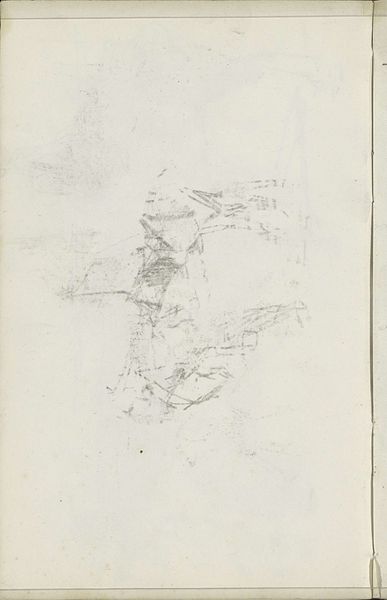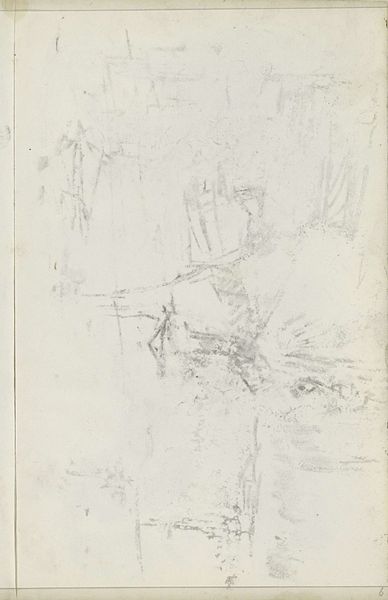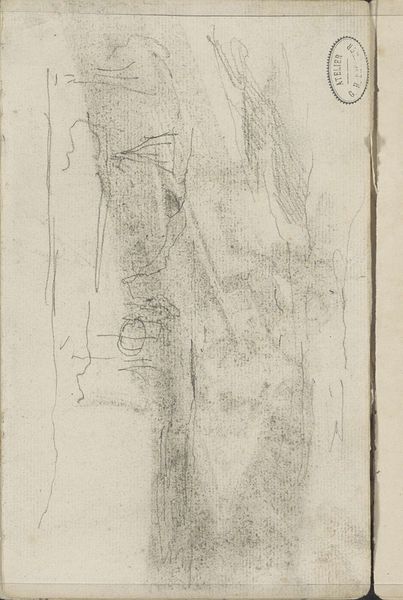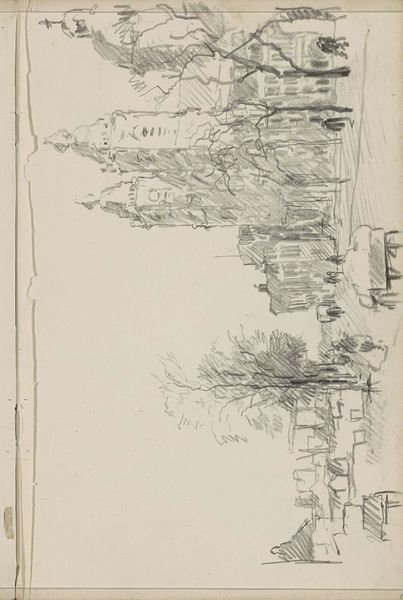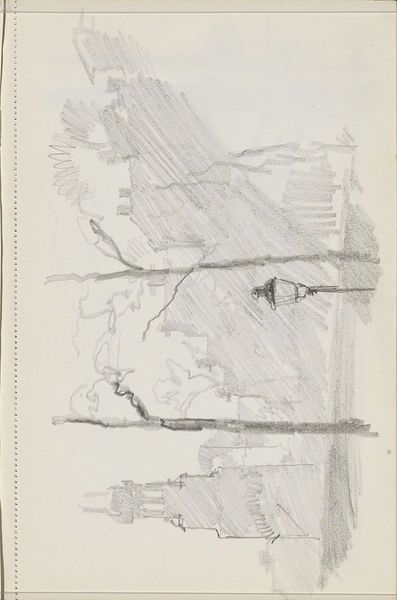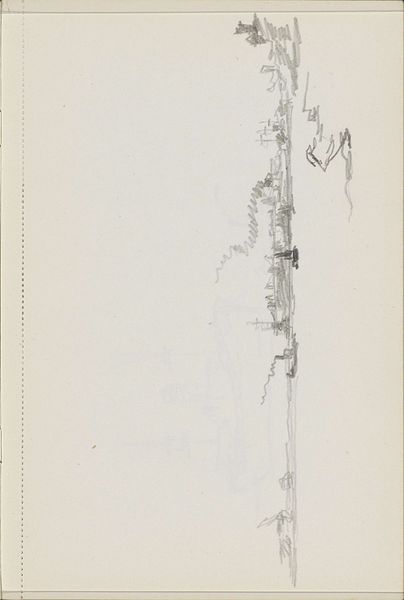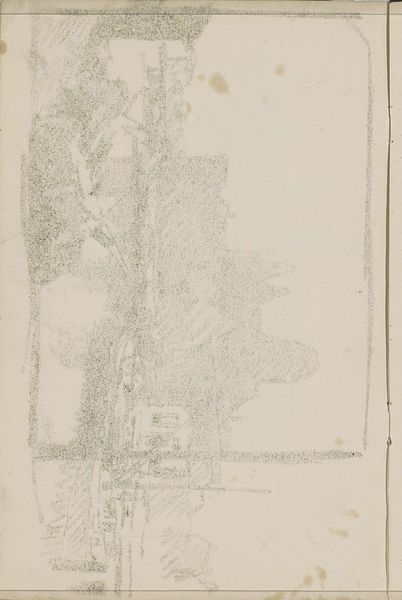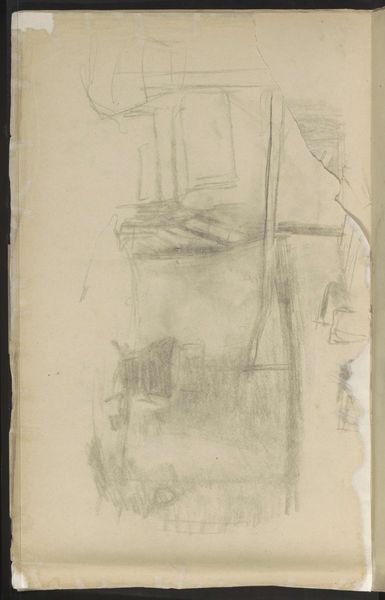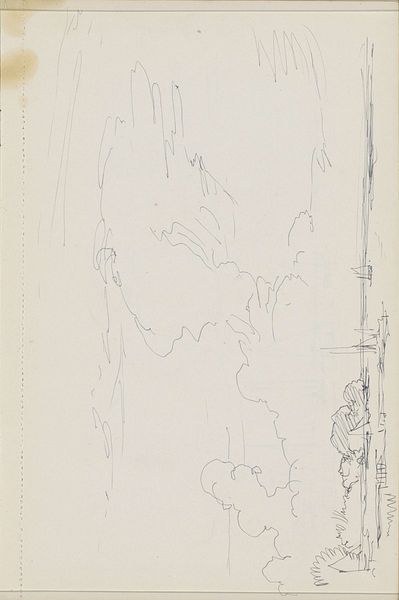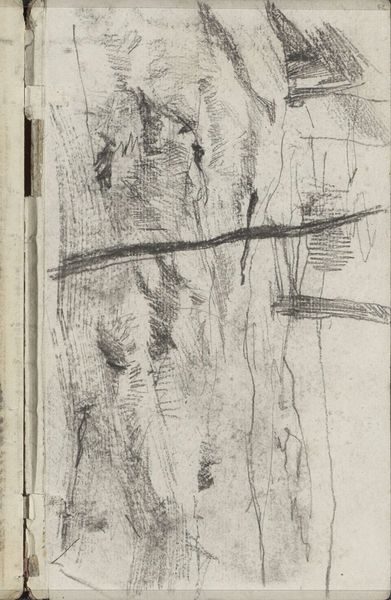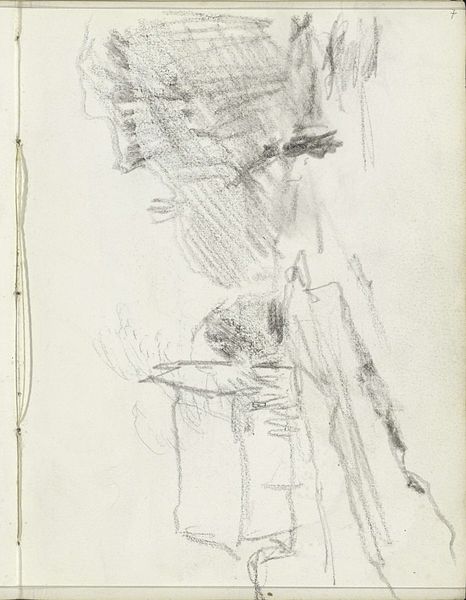
drawing, paper, graphite
#
drawing
#
paper
#
abstraction
#
line
#
graphite
Copyright: Rijks Museum: Open Domain
Curator: Looking at this work by Isaac Israels, entitled "Abklatsch van een krijttekening", created sometime between 1875 and 1934, the word that springs to mind is 'ephemeral.' Editor: Ephemeral, yes, but also unfinished. The graphite strokes on paper feel like a fleeting idea, a sketch of something only half-remembered. It is interesting, however, in that abstraction allows us to interpret things from the lens of our own experience. Curator: Exactly, and consider the context of its creation. Israels, working in an era grappling with rapid social and technological shifts, was likely reflecting a world of constant transformation in this work. What do we see when an artistic practice explores transience? Editor: The drawing seems to embody those anxieties – the dissolving form almost suggesting the fragility of societal structures. It echoes feminist concerns about representation and visibility – what gets seen, and what is deliberately obscured? Is that lack of clarity intentional? Curator: That lack of clarity allows us to look closely at the production and consumption of art at the time. Think about the rise of art markets, how they influence what’s valued. What political agendas might be lurking beneath the surface of even a simple sketch? Editor: Perhaps it also alludes to our collective struggles in the current landscape, especially when considering access. Whose stories are being centered, and whose are being left out of the artistic conversation, or even erased by a lack of historical resources? Curator: It prompts critical self-reflection on the viewer. Do we engage passively, or do we actively participate in shaping the narratives? Who holds the power in constructing meaning around an artwork, then and now? Editor: This image seems unfinished, perhaps even insignificant, but it echoes something elemental about history. We’re drawn into its lack of detail, considering its history while seeking how it aligns with our present, even if it feels tenuous. Curator: Ultimately, the drawing reminds us that art, like memory itself, is an incomplete, fragmented process, always in flux and shaped by our own perspective. It encourages us to seek complexity, as history invites ongoing interpretation.
Comments
No comments
Be the first to comment and join the conversation on the ultimate creative platform.

